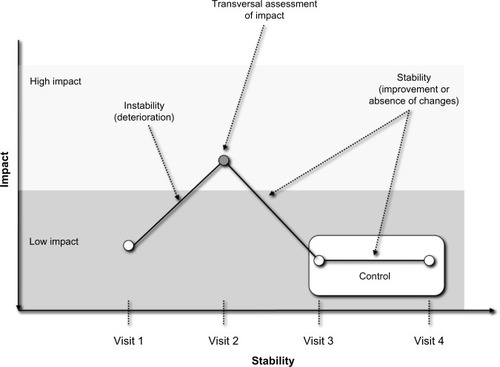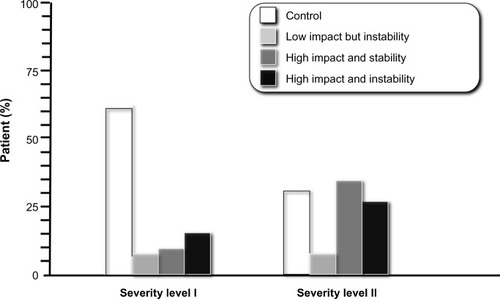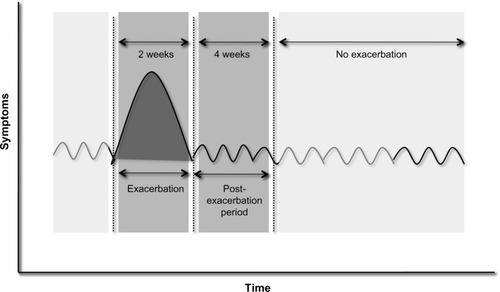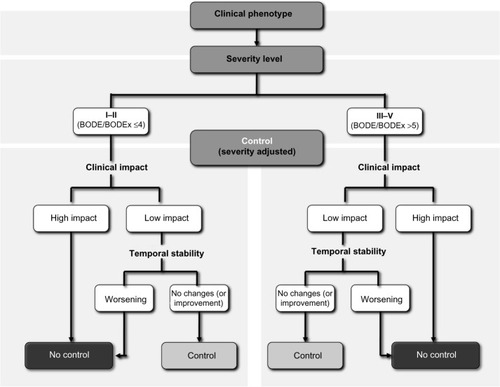Figures & data
Figure 1 Representation of the concept of impact, stability, and control in COPD.
Abbreviation: COPD, chronic obstructive pulmonary disease.

Figure 2 Distribution of the degree of control for levels I and II of severity, using the COPD Assessment Test scores.

Figure 3 Absence of exacerbation.

Table 1 Criteria necessary to establish the impact of patients with mild to moderate severity (BODE/Ex ≤4 points)
Table 2 Criteria necessary to establish the impact of patients with severe and very severe COPD (BODE/Ex >5 points)
Table 3 Criteria necessary to establish the degree of control
Figure 4 Evaluable dimensions of chronic obstructive pulmonary disease (COPD).

